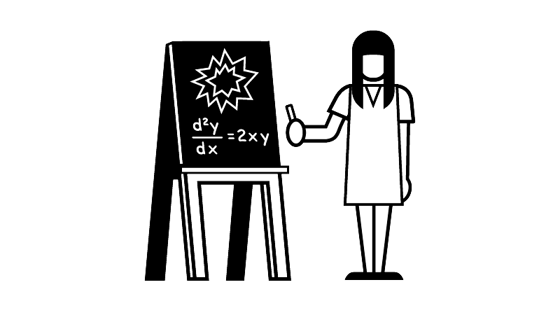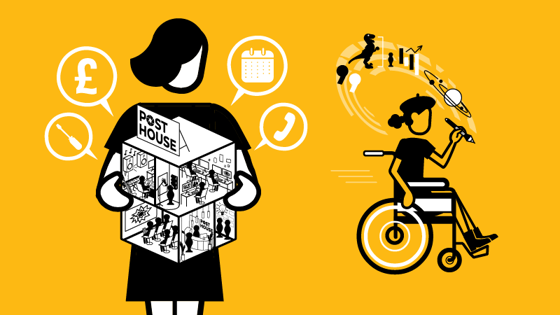Games
Technical artist

What does a technical artist do?
Technical artists (TAs) make the work of the artists easier. They develop the games engines, so they work as well as possible for the people making the art. If an artist wants to create something complex, TAs will say if it’s possible from a technical point of view and think of the best way of doing it. In some studios, where the animation team needs some complex rigging (creating a moving skeleton), they may call on the TAs to do it. They act as a bridge between the artists and the programmers.
Watch and read
What’s a technical artist good at?
- Supporting others: serve the needs of the art department and ensure the artists have the tools they need to do their jobs
- Problem-solving: spot potential problems, find solutions to art related problems
- Programming: diagnose software problems, understand games engines, workflows and graphics rendering and develop them so they work more effectively
- Communication: listen to the artists and programmers, explain and write clear reports
- Art: understand each of the major art disciplines. TAs can't provide support or tools unless they understand the process
Who does a technical artist work with?
Technical artists work with the art director and the programming team. They are the first port of call for technical problems encountered by the other artists.
How do I become a technical artist?
People become technical artists having worked in games for several years. They come through the art department, particularly animation, or they come through programming. Have a look at the animation job profile, generalist programmer job profile or the 3D modelling artist job profile for full details of how to get into the games industry through these routes.
At school or college:
This is one of a number of roles within the games industry that requires both artistic and programming skills. While at school or college, try to combine arts and sciences.
If you want to go to university, it would be useful to get A-levels, highers or a BTEC in a combination of the following:
- Art and design
- Graphic design
- Graphic communication
- Computer science
- Physics
- BTEC Diploma in Computing
Or you might want to take any of the following vocational Level 3 qualifications:
- BTEC Diploma/Extended Diploma in Art and Design
- UAL Diploma/ Extended Diploma in Art and Design
- BTEC Extended Diploma in Creative Digital Media Production
- OCR Cambridge Technical Diploma in Art and Design (Graphic Design)
- BTEC Diploma in Graphics
If you want to straight into a job, these Level 3 qualifications will equip you with relevant skills:
- Aim Awards Diploma/Extended Diploma in Games Animation and VFX
- AQA Technical Level Entertainment Technology: Video Games Art and Design/Design Production
- OCR Technical Diploma in Digital Media (Digital Content for Interactive Media)
- AQA Technical Level IT: Programming
- OCR Technical Diploma in IT (Digital Software Practitioner)
- BTEC Diploma in Computing for Creative Industries
Build a portfolio:
Create work that you can show off to employers. This is essential. Go to build your games portfolio to learn how.
Start modding:
Create levels of a game using software provided by the publishers.
Get a degree:
Have a look at ScreenSkills’ list of recommended courses in animation. We recognise courses with our ScreenSkills Select award where they offer training in the relevant software, dedicated time to building a portfolio and have strong links with the games industry. Or you might want a degree in games or computer programming.
Network:
Get to know people in the games industry by attending events, including games conferences and expos. Meet professionals and ask them questions about their work, while demonstrating interest and knowledge in the industry. Offer to provide them with your professional contact details and try to stay in touch with them. Go to Network well to learn how to do this.
Search for jobs:
Use the UK Games Map to find out if there are games companies near you, then go to their websites directly and check out their open roles. You could also check out the ScreenSkills jobs board.
Look outside games:
It’s also worth considering technical artist roles in industries like animation and VFX. You can build up your skills and move into games from there.
You might also be interested in…
Being a 3D modelling artist, an environment artist, a texturing artist, visual effects (VFX) artist, graphics programmer or generalist programmer in the games industry. You might also be interested being a production designer in the film and TV drama industries, a computer graphics (CG) supervisor, modelling artist, texture artist, an environment artist or a creature technical director (TD) in VFX, or an art director, a character designer, modeller or background designer in the animation industry.







